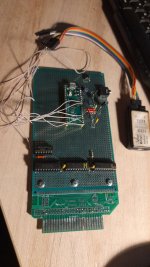RetroNewbie
Experienced Member
I am just getting into electronics and I don't fully get voltage levels, max current drain and others parameters used to define devices such as TTL etc.
My question is: can you interface something like an rpi pico directly to the qbus lines?
And if you need something like a line buffer, do you need dec-made parts or just stock parts that are available?
Thank you in advance
My question is: can you interface something like an rpi pico directly to the qbus lines?
And if you need something like a line buffer, do you need dec-made parts or just stock parts that are available?
Thank you in advance


